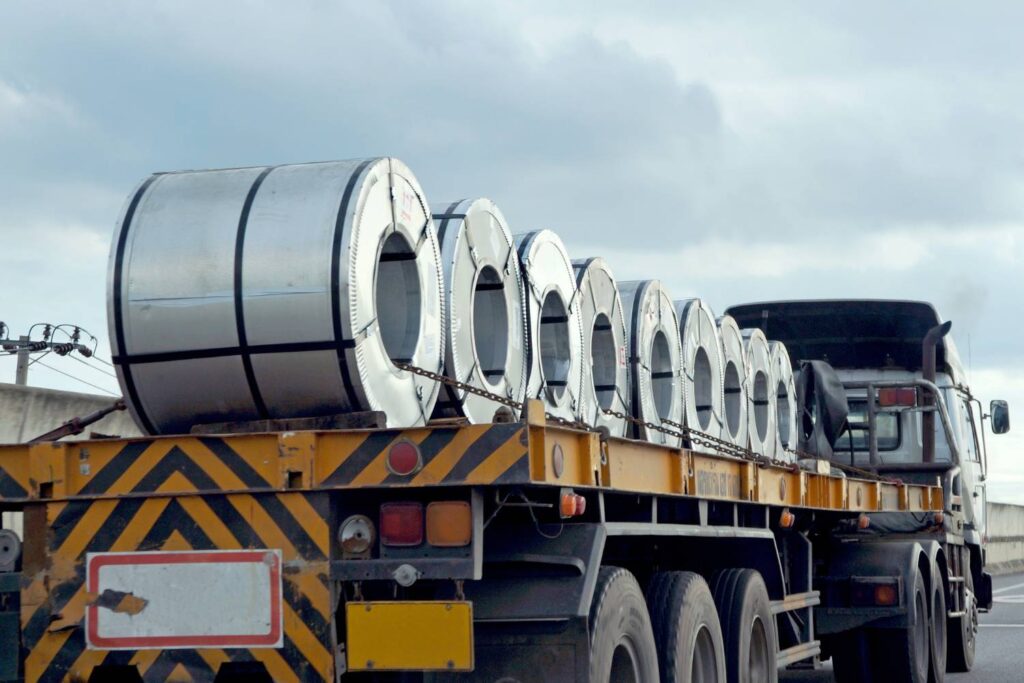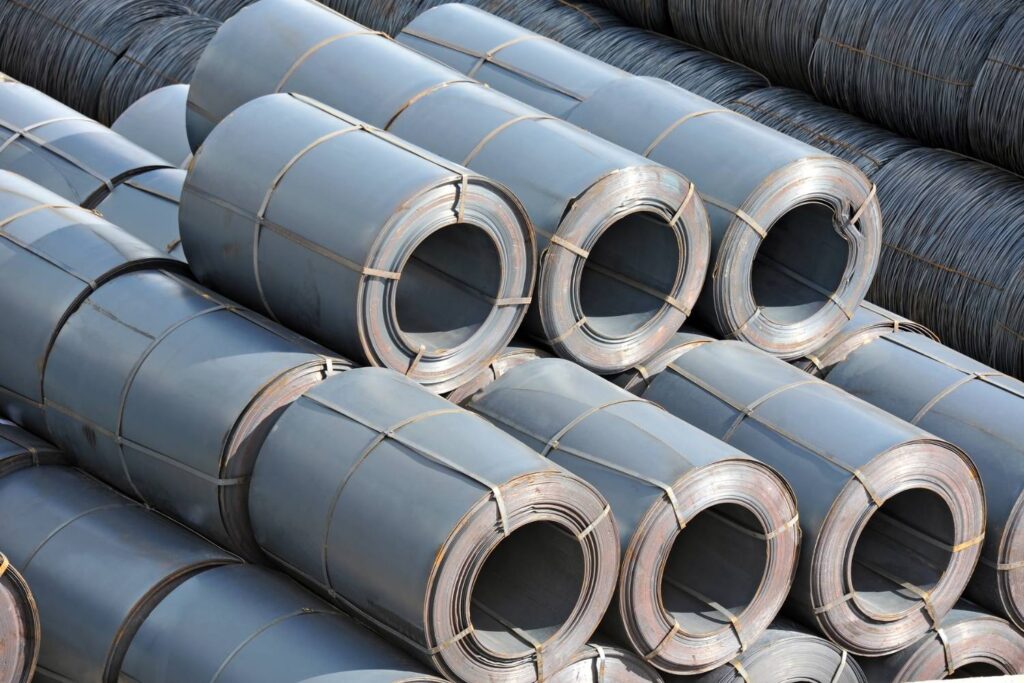At the heart of our modern infrastructure lies a process as critical as it is compelling—the rolling method of steel.
This technique, bridging ancient craftsmanship with contemporary engineering, moulds the very skeleton of our urban landscapes, vehicles, and countless industrial applications.
Rolling steel is fundamental to the architectural marvels that pierce the sky and the intricate machinery that drives our technological progress. Yet, its journey from raw material to finished product remains largely unexplored.
This article aims to illuminate the rolling method of steel, inviting engineers, students, and the steel-curious alike to explore the art and science behind this transformative process.
Let’s get straight to the point
The rolling method of steel is a fundamental manufacturing process that transforms raw steel into various shapes and sizes by passing it through rollers.
This process is crucial for creating the structural framework of buildings, vehicles, and other industrial applications. It involves two main types: hot rolling, performed at high temperatures, and cold rolling, done at room temperature for finer precision.
Specialised techniques like ring rolling and shape rolling cater to specific needs. Continuous casting machines and hot rolling mills play a key role in ensuring consistent quality and efficiency.
As technology advances, the steel rolling process is becoming more energy-efficient and sustainable, driving innovation in the industry.

The Basics of Steel Rolling
Steel rolling is a fundamental manufacturing process that has shaped the infrastructure and technology around us.
From the framework of towering skyscrapers to the body of sleek automobiles, rolled steel is a testament to human ingenuity and the relentless pursuit of progress.
This section delves into the basics of steel rolling and offers insights into how this process transforms raw steel into versatile, functional shapes.
What Is Steel Rolling?
At its core, steel rolling is the process of deforming steel into desired shapes and thicknesses by passing it between two or more rolls. This method is pivotal in reducing steel’s cross-sectional area and enhancing its yield strength and durability by manipulating its grain structure.
The process can be categorised mainly into hot rolling and cold rolling, each with distinct characteristics and applications.
Hot Rolling Vs. Cold Rolling
Hot Rolling
- Performed at temperatures above the steel’s recrystallisation point, typically over 1000°C.
- The steel is heated and rolled into a furnace, making it easier to shape and form.
- Results in a rough surface finish but allows for significant shape changes.
- Commonly used to produce larger sections like beams, rails, and sheets.
Cold Rolling
- Conducted at room temperature, offering finer control over the final product’s dimensions.
- Produces steel with a smooth surface finish, higher strength, and tighter tolerances than hot rolling.
- Often used to manufacture steel sheets, strips, and bars for precision applications.
The Rolling Process
The steel rolling process begins with heating large steel slabs or billets in a furnace (for hot rolling), preparing them for deformation. These heated materials are passed through rollers that gradually reduce their thickness, stretch them longer, and give them the desired shape. The choice of rolling mill depends on the steel type, desired shape, and thickness.
Types of Rolling Mills
- Two-High Mills: The simplest type, consisting of two opposing rolls.
- Three-High Mills: Allows continuous operation by adding a third roll at the top.
- Four-High Mills: Small rolls supported by larger rolls handle thin materials.
- Cluster Mills: Features multiple backing rolls on each side for fragile materials.
- Tandem Rolling Mills: Consists of multiple stands in a row, allowing the steel to pass through several rolls in one go.
Types of Steel Rolling Processes
The steel rolling process is a cornerstone of the manufacturing industry, pivotal in shaping the steel that underpins everything from towering skyscrapers to the cars we drive. This intricate process involves passing the metal through rotating rolls to reduce its thickness, alter its cross-sectional shape, and improve its mechanical properties. Let’s explore the various types of steel rolling processes refined over the years to meet the ever-evolving demands of industry and technology.
Diverse Rolling Mills for Varied Applications
The transformation of steel through rolling is made possible by a variety of rolling mills, each designed to cater to specific needs:
- Two-High Rolling Mills: This basic setup consists of two opposing rolls. It is versatile and widely used for various rolling tasks.
- Three-High Rolling Mills: Featuring three rolls in a vertical arrangement, this mill allows for continuous operation by facilitating the reversal of the workpiece without manual intervention.
- Four-High Rolling Mills: This configuration utilises two smaller work rolls supported by two larger backup rolls and is designed for the precision rolling of thin materials.
- Cluster Mills: These mills are known for their ability to roll extremely thin or tricky materials. They employ multiple backup rolls around smaller work rolls for enhanced support.
- Tandem Rolling Mills: Consisting of multiple rolling stands in sequence, tandem mills are capable of high-speed production, making them suitable for large-scale manufacturing.
Specialised Rolling Processes for Custom Applications
Beyond the essential hot and cold rolling, several specialised processes have been developed to meet unique manufacturing requirements:
- Ring Rolling: A specialised form of hot rolling that increases the diameter of a ring while simultaneously reducing its thickness.
- Thread and Gear Rolling: Cold rolling is used to form threads and gears on metal workpieces, offering advantages such as improved strength and material conservation.
- Shape Rolling: Designed to produce shaped sections like I-beams and rails, shape rolling involves passing the workpiece through rolls contoured to the desired cross-sectional profile.
The Machinery Involved in Steel Rolling
The content provided by Luoyang Shennai Power Equipment Co., Ltd. provides insight into the sophisticated machinery involved in the steel rolling process, mainly focusing on Continuous Casting Machines (CCM) and Hot Rolling Mills. These machines are integral to transforming raw steel into various forms and sizes, catering to various industrial applications.

Continuous Casting Machines (CCM) & Hot Rolling Mills
Continuous Casting Machines (CCM)
These machines are pivotal in the initial phase of steel production, where molten steel is solidified into semi-finished billets, blooms, or slabs. The CCM ensures consistent quality and efficiency in steel production and offers advantages like reduced waste and energy consumption.
Hot Rolling Mills
Following the casting process, hot rolling mills take over to further process the steel into various shapes and sizes. These mills can produce everything from thin sheets to complex shapes, like rebar, by heating the steel above its recrystallisation temperature and passing it through a series of rollers.
Key Features and Applications
- Steel Rebar Rolling Mill Production Line: This line is specifically designed to produce steel rebars. It is tailored for building material shops and manufacturing plants and can produce hot-rolled steel bars 3 to 40 mm in diameter.
- Steel Billets Continuous Casting Machine: This machine focuses on casting industries, offering a continuous casting process that ensures the efficient production of steel billets, which are then ready for further processing in rolling mills.
- Steel Bar Mini Rolling Machine: Ideal for smaller-scale operations, this machine provides the same functionality as larger rolling mills but is designed for smaller output sizes, maintaining the versatility needed for various manufacturing plant requirements.
The Future of Steel Rolling
As industries continue to push the boundaries of what’s possible, the steel rolling process is also evolving. Innovations in rolling technology, materials science, and process control are enhancing the efficiency, precision, and sustainability of steel rolling operations. The future promises even more advanced rolling mills and processes capable of producing steel products that meet the highest quality and performance standards.
Thought-Provoking Questions
- How can the principles of material transformation observed in other fields, such as biomaterials, inspire innovations in the steel rolling process?
- What role does technology play in enhancing the precision and efficiency of material transformation in steel rolling?
- How can energy efficiency be improved in the steel rolling process to minimise environmental impact and operational costs?
Conclusion
The rolling method of steel is a crucial process that shapes the skeleton of modern infrastructure, urban landscapes, vehicles, and industrial applications. This process involves deforming steel into desired shapes and thicknesses by passing it between two or more rolls.
The process can be categorised into two types: hot rolling, performed at temperatures above the steel’s recrystallisation point, and cold rolling, conducted at room temperature, offering finer control over the final product’s dimensions.
Steel rolling processes are evolving to meet unique manufacturing requirements, with specialised processes such as ring rolling, thread and gear rolling, and shape rolling.
Energy efficiency is also a key consideration in steel rolling. Advancements aim to reduce the energy required to heat and deform steel, making the process more sustainable and cost-effective.

